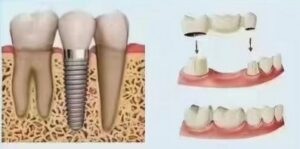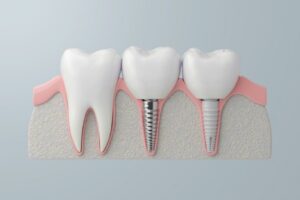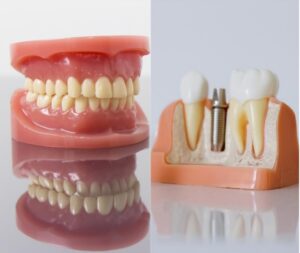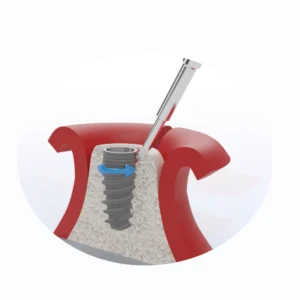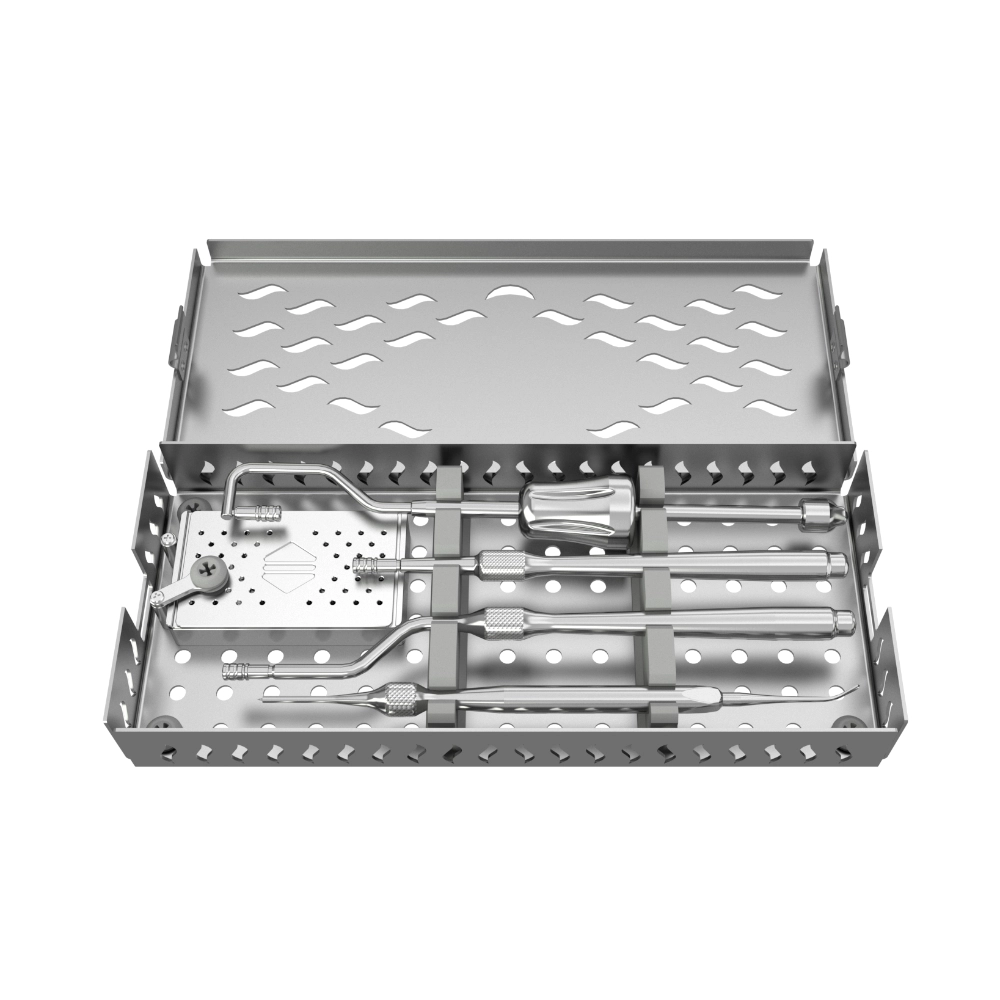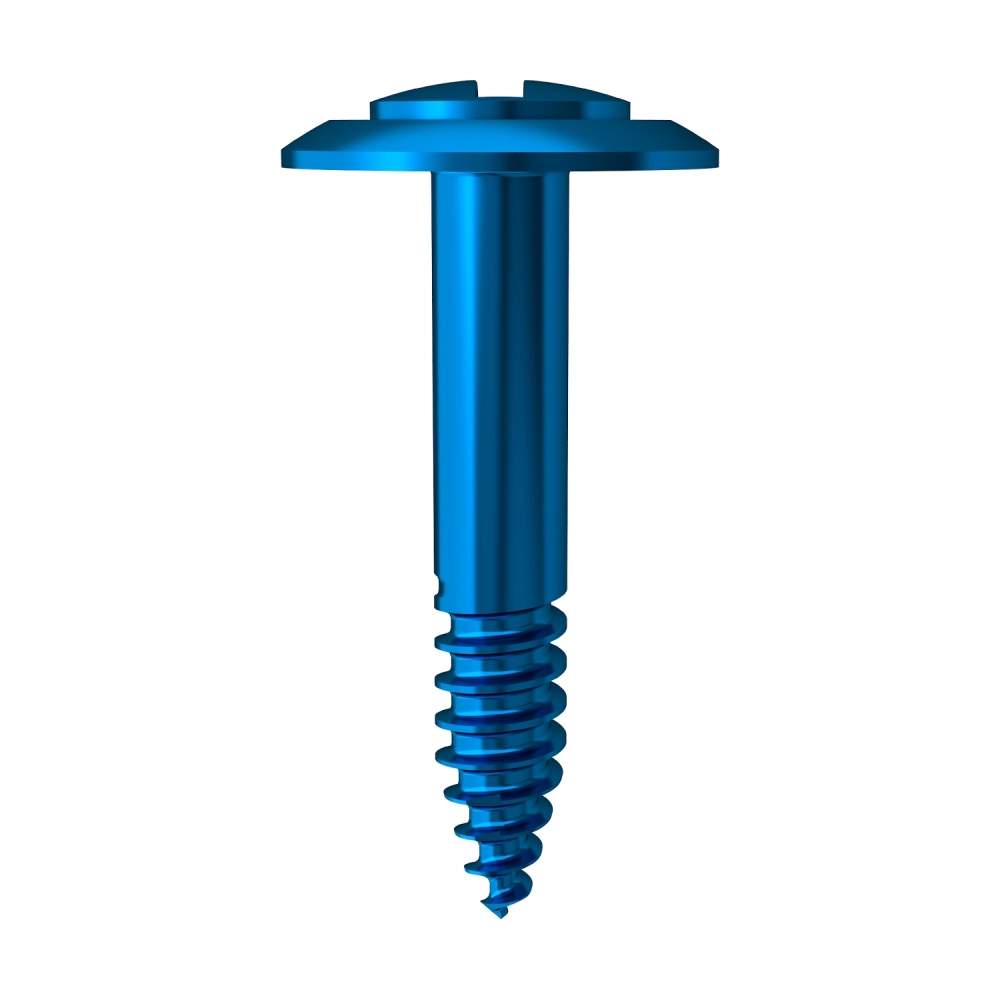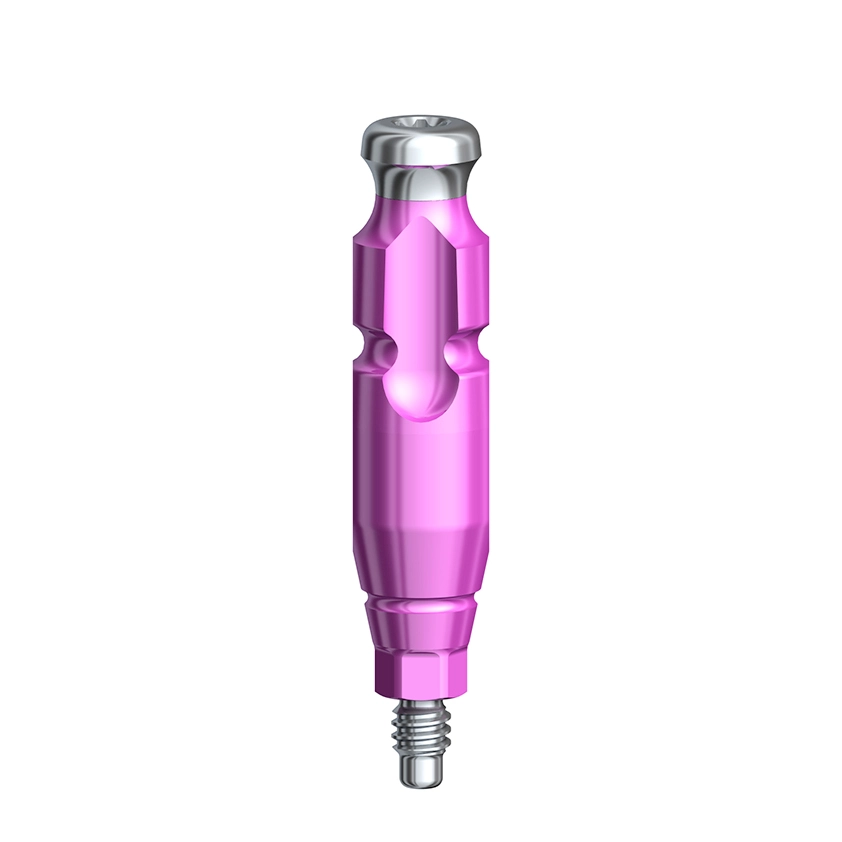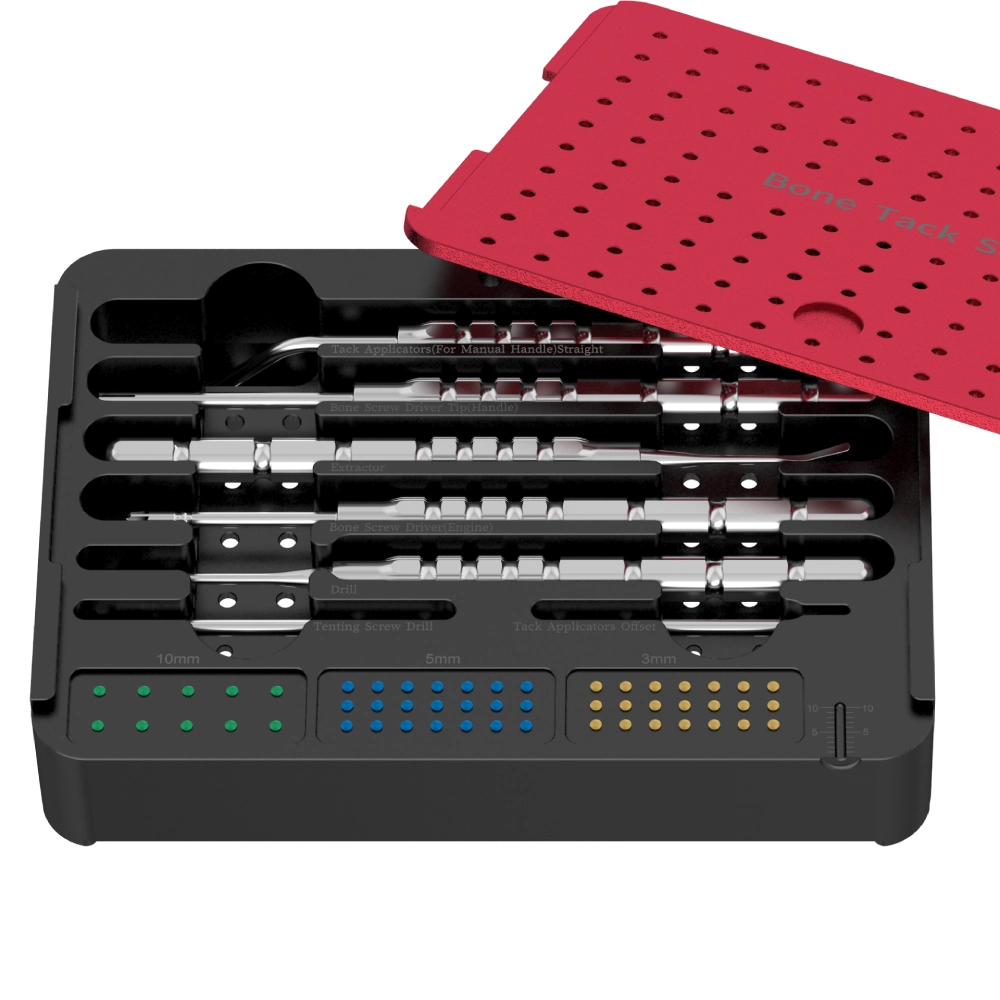Traditionally, whether opting for dental implants or other restoration methods, the journey from tooth loss to a “reborn” smile has been long and exhausting. Not only does the healing process take considerable time, but patients also need to make multiple visits to the clinic. However, in suitable cases, immediate implant technology allows for the dental implant to be placed right after tooth extraction. This significantly shortens the treatment timeline and reduces the number of dental appointments, offering a groundbreaking alternative for tooth restoration.
So, what unique advantages do immediate implants offer? How does the procedure work? And most importantly—are they right for you? Let’s uncover the truth behind immediate dental implants together.
What Are Immediate Implants?
In the field of oral restoration, immediate implants are considered an innovative technique. Simply put, immediate implant placement refers to inserting a dental implant directly into the alveolar bone at the same time a natural tooth is extracted—achieving “immediate extraction and implantation.”
This technique was first introduced by Schulte and Heimke in 1976. They were the first to report cases of implants placed into fresh extraction sockets and coined the term “immediate implantation.” Since then, after years of development, numerous studies have shown that immediate implants have a high survival rate, offering new hope to many patients with missing teeth.
However, immediate implants are not suitable for everyone. Following a consensus conference hosted by the Foundation for Oral Rehabilitation (FOR) on October 7–8, 2015, experts provided guidelines for single-tooth implant placement. To achieve predictable and aesthetically pleasing results, clinicians must carefully select appropriate candidates, develop a well-thought-out treatment plan, and execute precise implant placement during the procedure. Only under these conditions can immediate implants deliver their full benefits, helping patients restore both dental function and appearance efficiently.
What Is Immediate Loading in Dental Implants?
In the field of dental implants, immediate loading is also vividly referred to as immediate functional loading. This technique breaks the traditional time constraints of implant restoration by initiating the prosthetic process within 48 hours after the implant is placed into the alveolar bone.
The key prerequisite for successfully performing immediate loading is that the implant must achieve sufficient primary stability immediately upon placement. Only under this condition can the subsequent restoration proceed smoothly. When this technique is applied to a single missing tooth, it is specifically referred to as immediate restoration.
From a developmental standpoint, immediate loading has emerged in response to modern patients’ increasing demand for efficient and rapid treatment. Many patients seek to restore healthy teeth, chewing function, and confident smiles in the shortest time possible. It is precisely this demand that has driven the advancement of immediate loading techniques.
Looking back, Dr. Ledermann is regarded as a pioneer in this area. He was the first to document a successful case of immediate loading, where an implant was precisely placed in the anterior mandible. His work laid the foundation for future research and clinical practice. Building on this, Schnitman and his team went further by successfully stabilizing partial prostheses on immediately loaded implants—marking a breakthrough that opened new avenues for clinical applications.
Over time, multiple long-term studies (with follow-up periods of 5 to 10 years) have been conducted, offering robust evidence of the reliability and effectiveness of immediate loading. These studies show that for patients receiving immediate loading implants in post-extraction sites, the cumulative implant survival rate ranges from 97% to 100%—a remarkable success rate that has instilled confidence in both clinicians and patients alike.
Of course, in the early stages following immediate loading, certain precautions are necessary. To prevent the prosthesis from being subjected to excessive functional loads, dentists usually take two specific measures:
- Temporarily removing the temporary prosthesis from the occlusion to avoid contact during chewing activities.
- Advising patients to consume soft foods during the initial healing period, reducing pressure on the implant and prosthesis.
These strategies help ensure smooth osseointegration and long-term, stable restoration outcomes.
Are Immediate Implants Risky?
While immediate implant placement carries certain risks, the overall risk level is relatively low and can be further minimized through effective preventive measures.
The main potential risks include:
- Infekcja – After tooth extraction, the oral environment becomes more complex. If the surgical site is not properly disinfected or if postoperative care is inadequate, infection may occur, compromising the healing of the implant.
- Lack of Initial Stability – If the bone volume or morphology of the extraction socket is suboptimal, the implant may lack sufficient primary stability, increasing the risk of loosening or displacement.
- Unsatisfactory Aesthetic Outcome – Due to variations in socket shape, soft tissue healing, and individual anatomical differences, the final result may appear misaligned or inconsistent with the surrounding teeth.
- Uncertainty in Long-Term Success – The long-term success of the implant may be influenced by factors such as bone quality, overall oral health, and the patient’s commitment to postoperative care.
However, when treatment is carried out at a reputable dental facility by an experienced implantologist, these risks can be effectively managed. Key measures to ensure success include:
- Conducting thorough radiographic imaging and bone volume evaluation prior to surgery,
- Performing precise aesthetic and treatment planning,
- Maintaining strict aseptic techniques during the procedure,
- Ensuring the patient follows detailed postoperative care instructions, such as:
- Maintaining good oral hygiene,
- Using antibiotics and antiseptic mouthwash as prescribed to prevent infection,
- Avoiding hard foods to reduce pressure on the implant site,
- Attending regular follow-up visits for monitoring and adjustment.
When properly planned and executed, immediate implant placement can be a safe and efficient solution, significantly reducing treatment time while restoring both function and aesthetics.
Benefits for Patients and Clinical Practice
Patient Benefits
Provided that clinical indications are met, immediate implant placement combined with immediate loading offers patients numerous tangible advantages. From a treatment timeline perspective, it significantly shortens the overall treatment duration, especially by eliminating the additional time often required due to missing teeth. Patients can receive aesthetic restoration on the same day of surgery, allowing for a swift return of dental appearance and function.
A 2014 study indicated that, when compared with four other treatment options, patients showed a clear preference for immediate implant placement in the anterior maxilla, demonstrating the high level of acceptance and satisfaction associated with this technique. Therefore, under appropriate clinical conditions, immediate implant treatment is undoubtedly a high-quality solution that can greatly enhance patient satisfaction.
Clinical Practice and Marketing Advantages
In terms of clinical application, immediate implant placement with provisional restoration has shown predictable outcomes. A major advantage of immediate loading technology is the reduced need for surgical intervention and complex bone grafting procedures, which are often necessary for rehabilitating resorbed alveolar ridges. This single-stage technique simplifies the surgical process significantly, allowing patients to undergo only one surgical procedure rather than the traditional two-stage approach—thereby minimizing discomfort and burden.
Patients undergoing flapless single-tooth implant restoration also report an improved postoperative experience. Moreover, successful cases have demonstrated that immediate loading protocols can be equally effective for multiple implant placements.
From a clinical business perspective, immediate implant and loading techniques—when implemented through close collaboration between oral surgeons, prosthodontists, and dental technicians—form a compelling unique selling proposition (USP). This not only enhances patient satisfaction but also serves as a powerful marketing strategy, helping clinics attract more patients and gain a competitive edge in the dental marketplace.
How to Know If You Are Suitable for Immediate Implant Placement
To determine whether you are a suitable candidate for immediate dental implants, a comprehensive assessment is required, covering oral health, alveolar bone condition, overall systemic health, and individual needs. The following is a detailed analysis:
Oral Health Condition
- No severe inflammation: If there is inflammation in the oral cavity—such as gingivitis, mucosal inflammation, or sinusitis—or during acute inflammatory episodes (e.g., periapical periodontitis, periodontal abscess, acute periodontitis, or acute maxillary sinusitis), implant surgery should be postponed until the inflammation is resolved or well-controlled.
- No severe periodontal disease: Periodontal disease damages the supporting tissues and bone around the teeth, affecting implant stability. If periodontal disease is not properly managed, it may lead to implant failure or infection spread. Periodontal treatment and improved oral hygiene are necessary before proceeding with implantation.
- No uncontrolled dental caries: Cavities should be treated in advance to avoid compromising the effectiveness and success rate of the dental implant.
Alveolar Bone Condition
- Sufficient bone volume: Adequate alveolar bone is essential as the foundation for implants. If conditions are poor—such as inadequate bone support at the extraction socket, severe periodontitis leading to tooth mobility, significant bone wall defects, or insufficient residual alveolar bone—bone augmentation surgery may be required before considering immediate implant restoration.
- Appropriate bone density: Bone density plays a key role in initial implant stability. If the bone is too soft, the implant may lack the primary stability necessary for success.
Overall Systemic Health
- No serious systemic diseases: Certain systemic conditions—such as cardiovascular disease, diabetes, hypertension, immune disorders (e.g., long-term immunosuppressive therapy), coagulation disorders, or active infectious diseases—can reduce implant success and delay recovery. For example, patients with heart conditions may face cardiovascular complications due to anesthesia or anticoagulants, and patients with diabetes or immunodeficiency face higher post-op infection risks. Implant procedures are safer once these conditions are under stable control.
- No poor hygiene habits: Harmful habits, such as smoking, impair wound healing and tissue regeneration, increasing the risk of implant failure. Smoking cessation before surgery is strongly recommended.
Choosing the Right Immediate Implant System
In the field of immediate implantation, choosing the right implant system is of critical importance. It directly affects the predictability of the procedure and the long-term success rate. Implant systems that are well-researched and extensively validated in clinical practice are undoubtedly the preferred choice.
The DMD Implant System by DentalMaster—compatible with NobelActive—has demonstrated exceptional performance in immediate implantation and is considered an ideal option.
One of the most remarkable features of the DMD implant is its expandable tapered design. It is equipped with a drill-like tip at the apex, allowing for minimally invasive osteotomy during single implant placements. This significantly reduces trauma to surrounding bone tissue, thereby lowering surgical risks and minimizing patient discomfort.
Moreover, as the implant is inserted, it gradually compresses the bone, a feature that ensures excellent primary stability, even in challenging clinical situations such as soft bone or fresh extraction sockets. This adaptability makes it highly suitable for immediate implantation and immediate loading protocols.
High primary stability is a key factor for the success of immediate implant treatments. It lays a solid foundation for the long-term osseointegration of the implant and ensures the smooth execution of immediate restoration, allowing patients to quickly regain dental function and aesthetics, thus improving their quality of life.
Therefore, for patients seeking immediate implant solutions, the DMD Implant System by DentalMaster is undoubtedly a trustworthy and high-quality choice.

Immediate Dental Implants – FAQ
1. Are immediate dental implants better?
Compared to traditional delayed implants, immediate dental implants offer several advantages such as a shorter treatment cycle, fewer surgeries, and faster restoration of aesthetics and function. If the patient meets the indications and is in good overall health, immediate implantation is an efficient option. However, it is not universally “better” for all cases—individual assessment is required.
2. What are the risks of immediate dental implants?
The main risks include:
- Infekcja: The oral environment is complex after tooth extraction. Inadequate disinfection or poor postoperative care can lead to infection.
- Insufficient primary stability: If the bone volume or morphology at the extraction site is suboptimal, implant stability may be compromised.
- Aesthetic issues: Variations in gingival contour and soft tissue healing can lead to poor coordination with adjacent teeth.
- Uncertain long-term success: Factors like bone quality, oral hygiene, and postoperative maintenance influence long-term outcomes.
3. What is the difference between immediate and delayed dental implants?
- Treatment duration: Immediate implants are placed right after tooth extraction, reducing treatment time. Delayed implants are placed after the extraction socket has healed (typically 3–6 months).
- Number of surgeries: Immediate implants usually require one surgery; delayed implants typically involve two separate procedures.
- Suitability: Immediate implants demand better bone conditions and oral hygiene, while delayed implants are more broadly applicable but involve a longer waiting period.
4. What are the indications for immediate dental implants?
- Local conditions: No severe infection in the extraction socket, sufficient bone volume, and healthy gingiva.
- Systemic health: No severe systemic diseases (e.g., uncontrolled diabetes, immune disorders).
- Oral hygiene: The patient must be capable of maintaining good oral hygiene and complying with postoperative care.
5. What are the requirements for immediate dental implants?
- Patient conditions:
- No acute inflammation or infection.
- Bone shape and volume suitable for immediate implantation.
- Good general health without contraindications.
- Clinical expertise:
- An experienced oral surgeon is required to ensure proper placement and primary stability.
- Opieka pooperacyjna:
- The patient must strictly follow medical instructions, maintain oral hygiene, and attend regular follow-ups.
6. What is the failure rate of immediate dental implants?
The failure rate of immediate implants varies based on individual conditions, surgical expertise, and postoperative care. Generally, with strict case selection and standardized procedures, the failure rate is relatively low (usually below 5%). However, poor bone quality, inadequate oral hygiene, or improper aftercare can increase the risk of failure.

